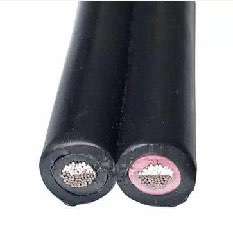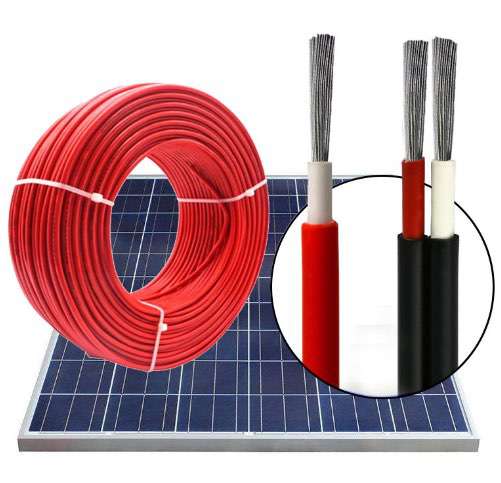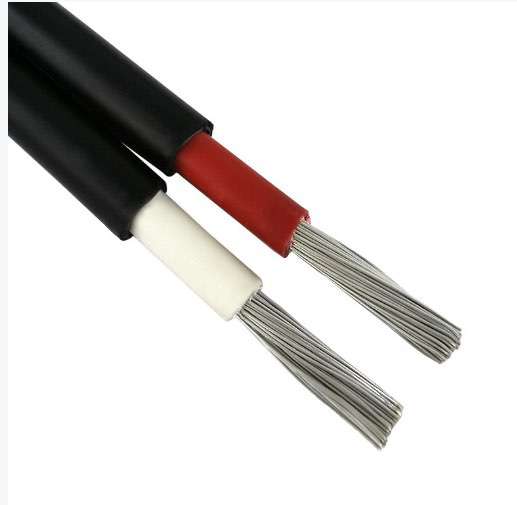 Author: Joey Wan
Author: Joey Wan  July 26,2022
July 26,2022
Dashu(Great Heat) is the sixth solar term in summer, starting from July 22 (or 23) and ending on August 7 (or 8) every year. As the saying goes, "the heat is hard to beat", and now is also a period of "high temperature" in the world. This year, the Great Heat is coming soon after the mid-autumn period. It is the hottest time of the year. The high temperature in many places reaches 40°C, and the high temperature warning signal takes effect. Although it is such a hot weather, it is also a favorable period to utilize solar energy resources. Using good photovoltaic cables will play a very good role in the process of power supply.

In-depth research is also optimistic about the materials of our photovoltaic lines. In the solar engineering environment, it is often heard that old electricians put tinned copper photovoltaic cables as the first place for laying solar energy. Therefore, for them, the advantages of tinned copper photovoltaic cables are undeniable. Here we expand to talk about the use of conductors.
About Tinned Copper

In short, tinned copper is copper coated with a base layer of tin, such as the better known tin solder. It sounds simple, but it's more than that. Copper itself has many beneficial properties that make it very popular, but it also has disadvantages. This is where tin plating comes into play. Tin plating is done for several reasons. First, it enhances the natural properties of copper, making it more resistant to humidity, heat and humidity, which is why it is used in premium PV wires.
What are the advantages of tinned copper for photovoltaic cables over bare copper?
Using tinned copper photovoltaic cables is a simple and effective way to prevent conductors from tarnishing or oxidizing. You may have seen copper turn green when oxidized. The American Statue of Liberty is a famous example of copper oxidation. What is causing this to happen? It is the chemical reaction of the copper surface with oxygen present in the air, causing some conductors to corrode or oxidize and form corresponding oxides on the surface.
The benefits of choosing tinned copper core wire for photovoltaic wires
Did you know that a 12awg tinned copper PV cable lasts ten times as long as a similar 12AWG bare copper wire? Since tin resists corrosion and does not oxidize the coating, it helps protect the copper inside the core of the photovoltaic cable. This avoids additional wear and tear, thus extending the life of the PV cable. This is especially important when the operating temperature of photovoltaic wires exceeds 100 degrees Celsius. At higher temperatures, the copper corrosion resistance of PV cables decreases, so tin coatings are valuable for protecting PV wires in this state. Tinned copper is also ideal for use in any outdoor environment. That's why it's a good choice when manufacturing photovoltaic cables.
How does copper tin plating work?

Copper has good electrical conductivity and is fairly resistant to corrosion. These facts combined with its durability make it ideal for electrical applications. Problems can arise when copper is used in humid environments or areas with high humidity. Under these conditions, copper corrodes and weakens more rapidly. Is there a way to prevent this? Yes. by tinned copper. Can I tin my copper wire? yes and no. The end of the cable can be stripped back with a wire stripping tool and can be easily tinned. This process requires only a few tools and steps. However, it is not as protective as the entire tinned wire.
Under high temperature conditions, the output power of solar cell modules will drop significantly as the temperature rises. At this time, a good photovoltaic cable plays an important role in conversion, so it is very important to choose a good photovoltaic cable. Hope to help everyone! It is recommended to continue to pay attention to Jianzhenda Cable to learn more about photovoltaic wire and cable information.
